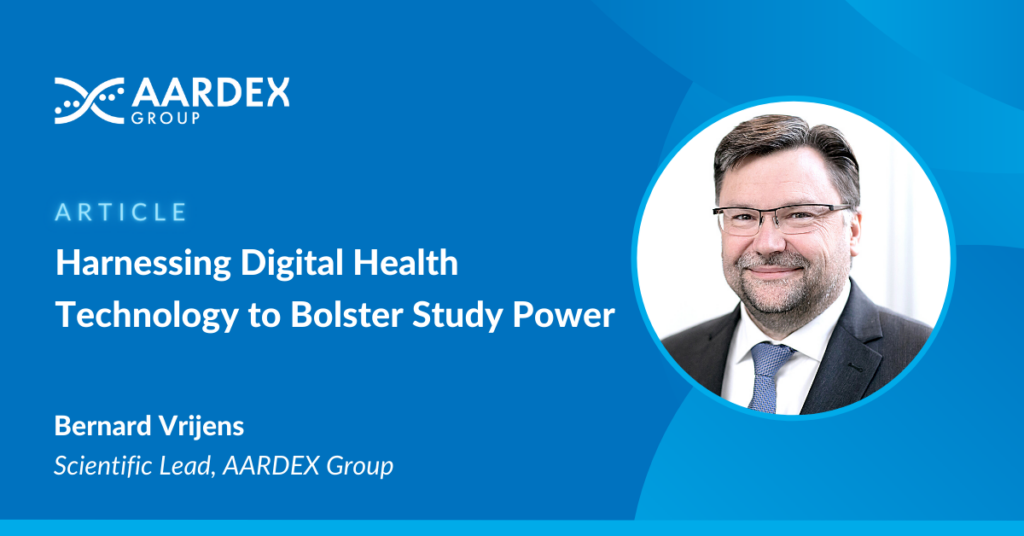In a world of big tech, data is king. This slogan is far from news for the Biopharmaceutical Industry, but clinical trials are lengthy, complex, and expensive, meaning precious information isn’t always utilized to its maximum potential.
In recent years, a slew of Digital Health Technologies (DHTs), designed to collect and share data remotely, have emerged to bridge that gap. And while uptake has been slow, new guidelines and regulations from the FDA and the European Union are finally creating a practical framework for an operation that promises to shift the dial.
But do we finally have the structures we need to build 21st-century clinical trials that hasten access to life-saving treatments? Or is there more we could be doing with data?
Clinical development is a risky business. It is complex, expensive, and time-consuming, and every trial has a relatively low chance of success. While figures vary between trial phases and therapy areas, the overall probability of success is just 13.8%.1
It’s important to remember, however, that failure doesn’t necessarily mean a lack of efficacy on the part of the investigational product. Issues with safety, optimal dose-finding, lack of funding, or problems with recruitment, enrolment, or retention can all sound the death knell.2
With so many revolutionary medical advances being made over the last ten years, it begs the question: how many potential candidates fall through the net due to clinical trial operational issues? And, if potentially life-changing compounds are failing to make it over the first hurdle, is the industry’s current fixation on access tantamount to putting the cart before the horse?
Digital health technologies (DHTs), designed to optimize the drug development pathway, hold at least some of the answers. They give each investigational product the highest chance of success by making the most of every available data point – by asking what this information tells us about the product, and how can it accelerate the development pathway without compromising on safety.
The benefits of DHTs in clinical trials have been well documented, but uptake has, so far, been slow.
In the safety-first world of health, the Silicon Valley motto of moving fast and breaking things does not apply. While advanced methods of data collection and sharing exist, they cannot simply be moved into routine workflows without extensive testing and validation.
This has proved something of a stumbling block. For some time, experts and commentators have been calling for clear, practical frameworks to use when moving these new techniques from theory into practice.
That’s where new FDA DHT guidelines and recent changes to EU clinical trial regulations, which have a clear focus on DCTs and the effective remote collection of data during hybrid and decentralized clinical trials (DCTs) come in.
It’s great news that the FDA has placed a strong emphasis on the usability of technology. No matter how good a technology is, or how robustly it captures or analyses data, if it’s challenging to use – even in the slightest – people won’t use it.
Or, as the FDA puts it: “Design and ease of use may influence whether trial participants will use the DHTs for the duration of the clinical investigation, and in the manner described in the protocol.”3
On the other side of the Atlantic, the EU is putting its weight behind the evolution of medical research. The Accelerating Clinical Trials in the EU (ACT EU) initiative, launched as part of an overhaul of the region’s clinical trial regulation, also recognizes the need to modernize.
Among its 10 “priority actions” for the next year are enabling innovative trial methods and supporting the modernization of good clinical practice. The program also intends to develop guidance around artificial intelligence in clinical trials, complex study designs, and DCTs.4
While the documents each have a slightly different focus, they both tell us that remote data collection is worthwhile – and, importantly, that it is here to stay.
Such developments are a welcome addition to the clinical trial revolution toolbox, providing sponsors and CROs with the frameworks the confidence to start embedding digital technologies into routine workflows
The FDA’s detailed advice on validating, implementing, and applying DHTs to clinical trials, also raises the issue of Medication Adherence. Patients not taking their medicines as set out in the protocol is a huge problem.
The impact of this on studies is just as monumental as that of poor retention or recruitment. It can result in underestimations of drug efficacy, cause safety issues, and drain study power to the point of study failure. But it is an often-neglected area, thanks, in no small part, to a historic lack of workable solutions.
Traditional methods, such as pill count, self-report, or even biomarker monitoring, have proved ineffective. They are open to bias and provide only a snapshot of medicine-taking behavior. Some are invasive, and all place an additional burden on the patient.
Recently, more advanced methods, such as e-medication diaries, or asking people to record and submit a video of dosing, have emerged. However, by introducing additional steps, they tend not to err on the side of usability. If we want to tackle a problem like adherence, we need to be tearing barriers down, not putting them up.
But combining the power of connected packaging and powerful analytics provides a frictionless solution that manages medicine-taking behavior without patients even noticing.
Connected pre-filled syringes, smart bottles, or blister packs, for example, can detect when the injection was administered or the tablet removed from the packet, and transmit that information to a cloud-based platform for analysis. Algorithms then spot erratic dosing patterns, such as medication holidays, and give teams the insights they need to risk stratify participants and prepare and deliver individualized interventions.
As with any other form of remote data collection and sharing, it is about wringing every drop of value from every data point. Because doing so will accelerate timelines, and, ultimately, speed up access to life-saving new drugs.
With the FDA and EU both backing remote data collection and innovative design, clinical trials are moving into the 21st century. Researchers, finally, have the evidence-backed tools they need to optimize their studies.
Of course, there is still some work to be done in terms of endorsing specific, value-added technologies, including digital adherence monitoring, but it is exciting to see the industry moving in the right direction.
References
- Berezow, A. Clinical trial success rates by phase and therapeutic area. (2020). https://www.acsh.org/news/2020/06/11/clinical-trial-success-rates-phase-and-therapeutic-area-14845
- Fogel, D. Factors associated with clinical trials that fail and opportunities for improving the likelihood of success: A review. (2018). https://www.ncbi.nlm.nih.gov/pmc/articles/PMC6092479/
- FDA. Digital health technologies for remote data acquisition in clinical investigations guidance for industry, investigators, and other stakeholders: Draft (2022). https://www.fda.gov/media/155022/download
- HMA, EC, EMA. Accelerating Clinical Trials in the EU (ACT EU) Delivering an EU clinical trials transformation initiative. (2022). https://www.ema.europa.eu/en/documents/regulatory-procedural-guideline/accelerating-clinical-trials-eu-act-eu-delivering-eu-clinical-trials-transformation-initiative_en.pdf
- Heem Wong, C., Wei Siah, K et al. Estimation of clinical trial success rates and related parameters. (2018). https://academic.oup.com/biostatistics/article/20/2/273/4817524
- Fogel, D. Factors associated with clinical trials that fail and opportunities for improving the likelihood of success: A review. (2018). https://www.ncbi.nlm.nih.gov/pmc/articles/PMC6092479/
- Hwang, T., Carpenter., D. et al. Failure of Investigational Drugs in Late-Stage Clinical Development and Publication of Trial Results. (2016) https://pubmed.ncbi.nlm.nih.gov/27723879/



